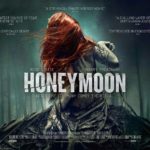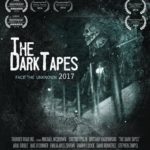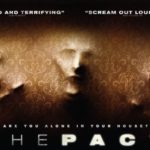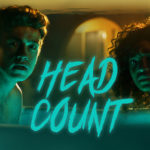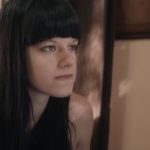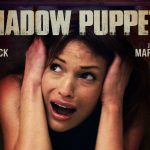Review by Chris Rennirt
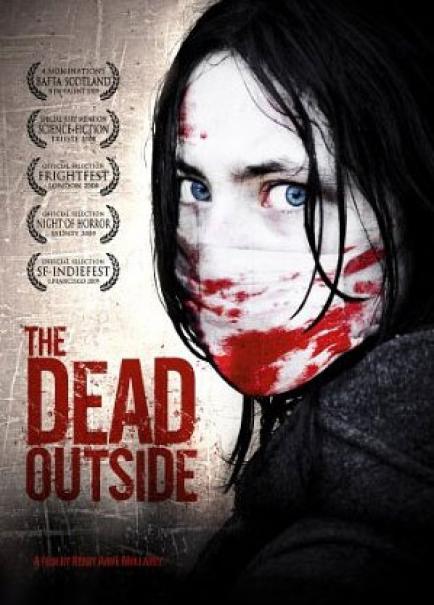 With real-life horrors of COVID19 and their lingering effects, can movies about pandemics ever be novel again? (No pun intended.) Hitting too close to home for many, with too much uncomfortable realism, people may be as interested in changing the subject and moving on, as they are about ditching masks and stopping social distancing. However, it is with this retrospective review of a mostly unknown film that we can take our time capsule back to a time when movie fiction had no connection to current realities. That film from the time machine, thirteen years back to be exact, is The Dead Outside.
With real-life horrors of COVID19 and their lingering effects, can movies about pandemics ever be novel again? (No pun intended.) Hitting too close to home for many, with too much uncomfortable realism, people may be as interested in changing the subject and moving on, as they are about ditching masks and stopping social distancing. However, it is with this retrospective review of a mostly unknown film that we can take our time capsule back to a time when movie fiction had no connection to current realities. That film from the time machine, thirteen years back to be exact, is The Dead Outside.
What’s it about? Six months after a neurological pandemic has decimated the population somewhere in Scotland, two survivors, with fate bringing them together, do their best to stay alive. To make things worse (and really make this a horror film), those infected are basically zombies. Crazed and homicidal, and, as a twist on genre tropes, they remember and react to only the last major memory they had. Since the movie’s only perspective is that of the particular Scottish location the movie shows us, there is no way to tell how far the pandemic has spread in Scotland or, perhaps, around the world. We get the story from the knowledge and experiences of the characters only, limiting what we know as well. In this way, the story is made more simple, more focused, and possibly more effective as a mystery.
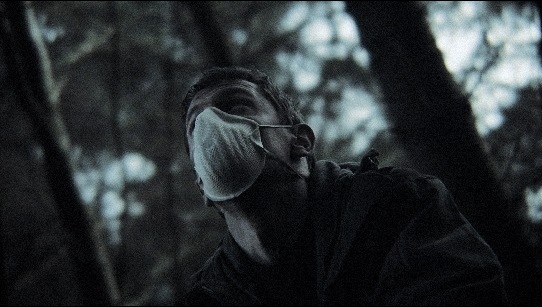
Daniel (Alton Milne) masking up for the pandemic in The Dead Outside
The Dead Outside (directed and cowritten by Kerry Anne Mullaney) is far from the typical micro-budget/bad acting combo. The two main actors are actually excellent. Sixteen-year-old Sandra Louise Douglas (as April) is particularly excellent, especially for her younger age. More impressive is that her role requires intense emotions, even crying on cue, and she delivers every time. (I’m actually amazed that, with her talent, her current IMDb filmography lists only one movie since the filming of The Dead Outside in 2008.) Alton Milne (as Daniel) starts the story, drawing us in through his experience, his desperation making it all the more ominous and real. Sharon Osdin (as the imperiled wayfarer Kate) holds her own with the others to be another convincing character of mystery, rebooting tension at just the right time. As an expected throwaway victim, Osdin holds her own, rivalling the main characters for motives, screen presence, and accolades.

April (Sandra Louise Douglas) hides many dark secrets in The Dead Outside
Another good aspect of the film is the mystery it creates early on and hangs onto through the better part of it. April is a girl with dark secrets, and she guards them with passion (and even anger), making the mystery even greater, making us want to know even more. The characters of April and Daniel are also the perfect compliment. April is a girl with experiences that have already shaped her, as it seems, rigidly and immutably for the worst; Daniel is still learning the way to react to his traumas, how to to best deal with them, feeling still in control of his outcome–something perhaps more positive and hopeful as a contrast. Together, their relationship is poetically symbiotic, elevating the movie to a higher level and potential. Adding to the film’s complexity and connections is Kate–the wildcard of a character who could go either way, depending on opportunity and impulse. But, does The Dead Outside, with all its character dynamics and potential, achieve what it could?
One of the most damaging aspects of the movie is, perhaps, the flaws created by its micro budget. As the producer Kris R. Bird says in a behind-the-scenes featurette on the the DVD, they only had the farmhouse for two weeks, no more. There was no extra time to do anything, no extra time to reshoot a scene, and no contingency plans. Every day had specific scenes that had to be filmed, with no choice but to move on regardless. With these comments, I gathered that, although flaws were known, they simply had no time or money to correct them. While I can certainly appreciate all of that, I still must evaluate a movie for the qualities it should have, those that make it deserving of praise or, at least, a recommendation to be seen.
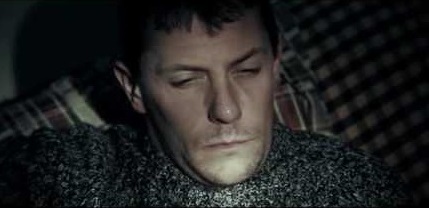
A rare moment for Daniel (Alton Milne) to relax, in The Dead Outside
As for the flaws, I would be too generous to assume that all or most of them were the result of a micro budget only. Many seemed more the result of something missing on the part of those producing and directing it–and of those, there are many. Focus sometimes goes in and out for no artistic or otherwise beneficial reason–for no reason other than the camera’s auto focus not focusing on the right area. Dialogue is often too low, made less audible and barely comprehensible with horribly inappropriate music played at the same time, louder than the dialogue itself. While I might not have heard what was being said with nothing but the dialogue, I sure couldn’t here it with louder music played over the top of it. Worse yet is that much of the low dialogue reveals important plot points. In a particular scene, about three-fourths of the way in, April reveals, verbally, many important background details about herself that are nearly inaudible, again due to low, uneven, fluctuating sound. Making things even worse (if it seems possible now), there are no subtitles on the disc, leaving not even the usual default for knowing what the dialogue actually is. While the Scottish accent was a bit heavy at times, it was nothing compared to barely audible dialogue, eclipsed by music–music more correctly described as annoying sound.
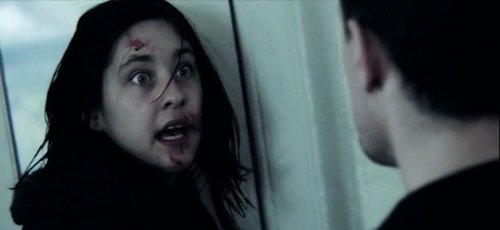
April (Sandra Louise Douglas) and Daniel (Alton Milne) in The Dead Outside
I never enjoy criticizing a movie, especially after I see a behind-the-scenes featurette showing what a labor of love it was, taken so seriously, with such care, with such creative use of available resources, time, and money. I know I’m picking apart “someone’s baby,” and it’s never a comfortable thing to do. I also never enjoy criticizing a movie that seems to have failed, mostly because of technical issues unrelated to the otherwise excellent performances of the actors. Sadly, however, all of this is exactly what I had to do reviewing The Dead Outside.
As for special effects (which must always be evaluated in horror), they are passable and good enough to do the job. In the behind-the-scenes featurette, there is talk of CGI effects used, with examples; they are, however, effects of the kind I would call computer altered rather than computer generated. Mostly, such alteration replaced the effects of more time-consuming makeup applications. As for the zombies, Night of the Living Dead came to mind in every scene and not in a bad way; it’s one of my favorites.
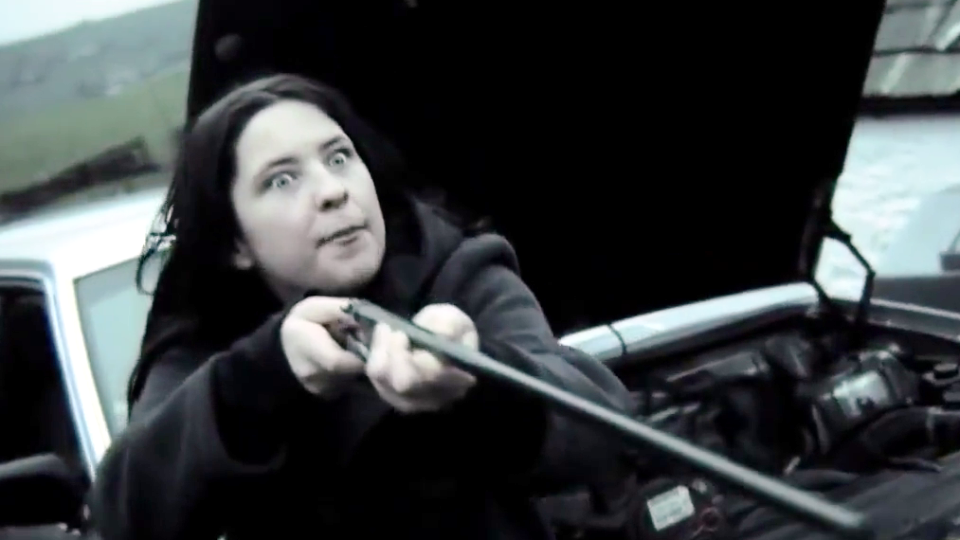
Never mess with a survivalist with a gun, in a Zombie horror film!
As for the DVD, if you’re actually thinking of buying it at this point, send me a message and I’ll sell you mine. Doing further damage to the movie’s impression is a digital transfer that is horrendous to say the least. It’s dark and grainy, with an image that jerked numerous times throughout (and no, there’s nothing wrong with my player). What’s worse is that, while the movie is in widescreen and is anamorphic, it is a bit stretched into the aspect ratio in which it is presented. This is possibly the most unforgivable of all the movie’s technical flaws. That is a post-production, quality-control issue that should have been addressed before mass production of the discs. Even though one may have limited money and two strict weeks at a filming location, there should be no shortage of time to get a DVD done right.
And finally, the movie’s DVD cover and poster are possibly what I liked most–things ironically so unrelated to the movie itself. (See it above, as the first image included.) If the movie was anything like what the box art promises, with April’s ominous, penetrating blue eyes and mouth wrapped in blood-stained gauze, it would likely be awesome. My imagination had great expectations for it. But, if only my imagination had been the director, writer, and producer. Instead, the poster is mostly a deceptive, albeit artistic horror image worth framing, without reference to the film.
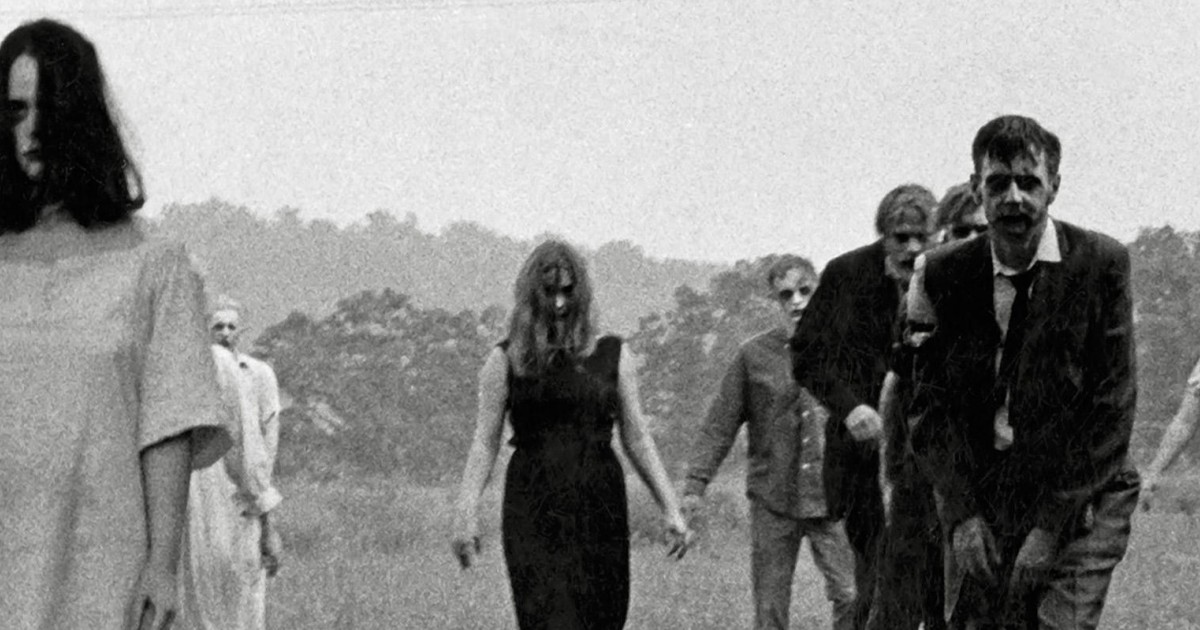
The Dead Outside makes me think of a much better film of its kind from 1968!
In conclusion, The Dead Outside is not a movie I can recommend. The four stars I gave it were mostly for the actors giving it their all and the heart put into it–things I hate to reward movies solely for doing. With all of its technical failures (I think not related entirely to its low low budget), it is simply too much of a labor to watch. The frustration I felt trying to hear it, see it (often in such low light), with a camera that was all over the place too often, made it more annoying than effective as a horror film. Too many such distractions kept me from appreciating the story within it that could have been so much better. Topping it off (or bottoming it out) is a horrendous transfer to DVD, leaving me wanting a refund rather than a hard copy. The Dead Inside is a movie that should be remade with a larger budget and more time to do it properly. Somewhere within the muck (and its awesome poster) lies a story deserving better. In the meantime, if you get the urge to buy The Dead Outside, my copy’s for sale. If you’d rather save a few bucks, it’s currently on Youtube absolutely free!

Rocket Rating – 4
Chris Rennirt (the author of this review) is a movie critic and writer in Louisville, Kentucky, as well as editor in chief at Space Jockey Reviews. He has been a judge at many film festivals, including Macabre Faire Film Festival and Crimson Screen Film Fest, and he attends horror and sci-fi conventions often. Chris’ movie reviews, articles, and interviews are published regularly on Space Jockey Reviews and in Effective Magazine. His mission statement (describing his goals as a movie critic and philosophy for review writing) can be found on the “Mission” page, here at SJR. For more information about Chris Rennirt (including contact details, publicity photos, and more), click here.
You may also like these!


